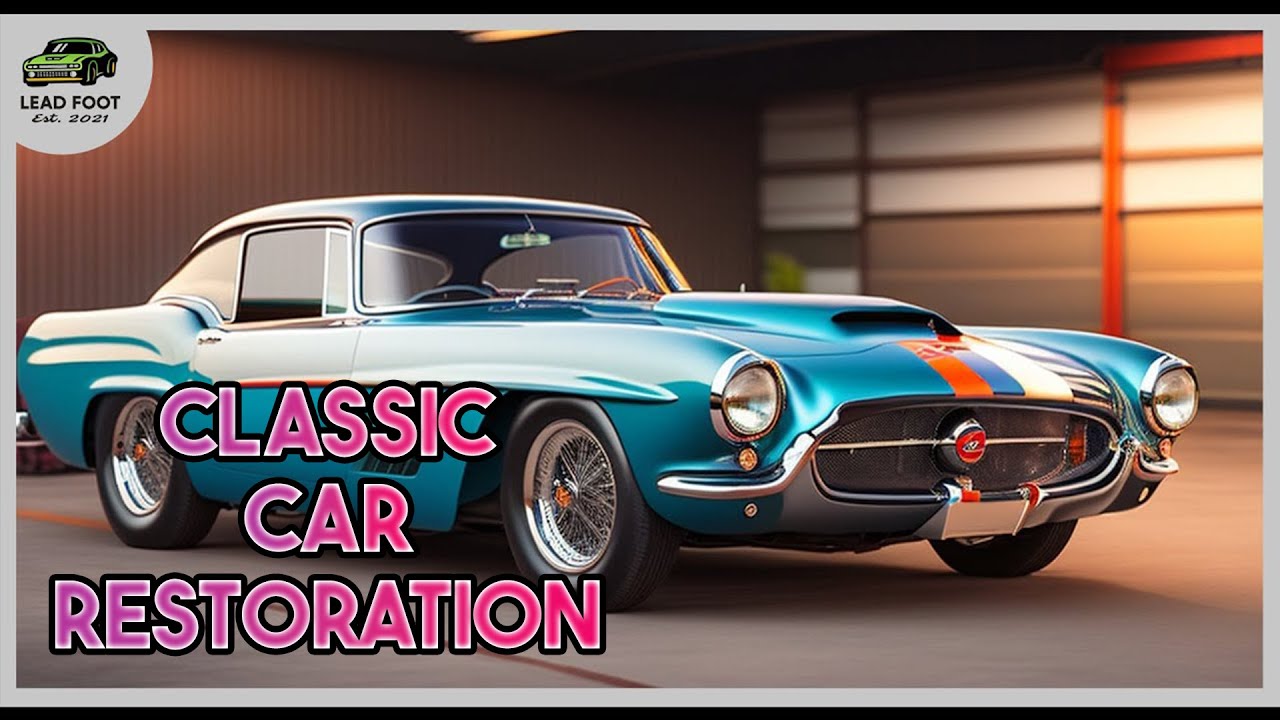Imagine taking a step back in time, where elegance and craftsmanship reigned supreme on the open roads. Classic cars from bygone eras evoke a sense of nostalgia and wonder, reminding us of a time when automobiles were more than just a mode of transportation—they were works of art. Classic car restoration enthusiasts are dedicated to preserving and reviving these vintage beauties, ensuring they continue to turn heads and capture hearts for generations to come.
In this blog post, we will explore the fascinating world of classic car restoration, from the motivations that drive enthusiasts to the intricate process of bringing these automotive icons back to life.
The Passion Behind Classic Car Restoration
Why do people invest countless hours and resources into classic car restoration? The answer lies in the deep-rooted passion for these vehicles. Classic car enthusiasts aren’t just restoring cars; they’re reviving a piece of history. Each vintage car tells a unique story, whether it’s a 1969 Ford Mustang, a 1957 Chevrolet Bel Air, or a 1970 Porsche 911. These vehicles embody the spirit of their time, reflecting the societal and technological advancements of the era they were built in.
Restoration enthusiasts are driven by a desire to honor the craftsmanship of yesteryears, paying homage to the skilled hands that meticulously assembled these vehicles. There’s an unparalleled sense of accomplishment in taking a rusted, forgotten relic and transforming it into a showroom-worthy masterpiece.
The Art of Classic Car Restoration
Classic car restoration is not for the faint of heart. It requires a combination of expertise, patience, and a deep understanding of automotive history. Here are the key steps involved in bringing a vintage car back to its former glory:
- Research and Documentation:
Before any wrenches are turned, thorough research is essential. This includes identifying the car’s make, model, year, and historical significance. Gathering original documentation and manuals is invaluable for the restoration process. - Stripping Down:
The first step in the physical restoration is stripping the car down to its bare frame. This involves removing all the parts, including the engine, interior, and body panels. The goal is to assess the extent of damage and rust, creating a clean canvas for the restoration. - Bodywork and Paint:
Repairing the car’s body is often a meticulous and time-consuming process. Skilled craftsmen work to remove rust, dents, and imperfections before applying a fresh coat of paint. Authenticity is crucial here, as enthusiasts strive to replicate the car’s original colors and finishes. - Mechanical Overhaul:
The engine, transmission, suspension, and other mechanical components receive a thorough inspection and restoration. This step ensures that the car not only looks like new but also runs like a dream. - Interior Restoration:
The interior is just as important as the exterior. Restorers pay attention to every detail, from reupholstering seats to restoring dashboard components and instrumentation. - Reassembly and Fine-Tuning:
After all the individual components have been restored or replaced, the car is carefully reassembled. This includes tuning the engine, aligning the body panels, and ensuring that everything functions as it should. - Testing and Quality Control:
Before the classic car is ready to hit the road, it undergoes rigorous testing to ensure safety and performance. Any issues are addressed, and the final touches are added to complete the restoration.
The Rewards of Classic Car Restoration
The journey of classic car restoration is undoubtedly challenging, but the rewards are immeasurable. For enthusiasts, it’s about more than just owning a beautiful vintage car; it’s about preserving a piece of history and passing it down to future generations. Here are some of the most gratifying aspects of classic car restoration:
- Nostalgia and Sentimentality:
Owning and driving a restored classic car is like stepping back in time. It allows enthusiasts to relive the past and connect with the history of the vehicle. - A Sense of Achievement:
Completing a restoration project is a significant accomplishment. Restorers take pride in their work, knowing they’ve brought a piece of automotive history back to life. - Community and Camaraderie:
Classic car enthusiasts often form tight-knit communities. They share knowledge, resources, and a common passion for vintage vehicles, creating lasting friendships along the way. - Preservation of Heritage:
Classic car restoration plays a crucial role in preserving automotive heritage. It ensures that future generations can appreciate and understand the evolution of automobiles.
Conclusion
Classic car restoration is a labor of love that requires dedication, skill, and a deep appreciation for automotive history. It’s a journey that allows enthusiasts to breathe new life into vintage beauties, ensuring that these icons of the past continue to turn heads and capture hearts. As we celebrate the passion and craftsmanship behind classic car restoration, we are reminded that these vintage vehicles are more than just machines; they are a testament to the enduring spirit of innovation and artistry. So, if you ever find yourself in the presence of a beautifully restored classic car, take a moment to appreciate the dedication that went into bringing that vintage beauty back to life.





